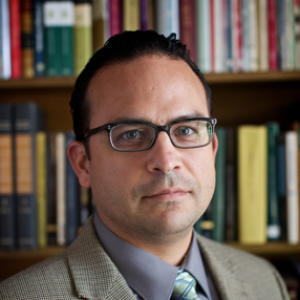Resources

This book explores the impact of eLearning on the quality of teaching in higher education, focusing on three main issues: university teachers’ perception of quality teaching, their strategies for achieving quality teaching in practice, and interventions that design and implement online collaborative activities in a large class. The book argues that if eLearning targets the real problems in practice and is appropriately designed and implemented, it can improve the teaching quality at universities. It also demonstrates the complexity of teachers’ perception of quality teaching and contextual factors that affect teaching practice and quality. Further, it explores university teachers’ perception of quality teaching in Italy, the UK and China – an aspect that is rarely addressed in the literature – and reveals why the impact of ICTs on university teaching is not as great as in other fields by explaining the issues that threaten the quality of day-to-day teaching. Lastly, it confirms that traditional lecturing, combined with online collaborative activities, improves the quality of teaching compared to traditional lecturing alone. As such, this book is a necessary and important resource for the research community. (From the Publisher)

An important backdrop to the achievement of the Millennium Development Goals involves consideration of the impact of a ‘new demographics’ derived from the interaction of two global developments. First, high levels of internal and cross-border mass migration, stimulated by climate change, violence and disparities in wealth and social stability within and between different countries and the global South and North. Second, the phenomenon of increasing longevity and rapidly ageing populations, especially in the developed world. This book explores the central role that socially engaged higher education might potentially play in helping address these challenges, enhancing lifelong learning opportunities and facilitating more positive outcomes for both individuals and societies. The contributors to this book are scholars of higher education and lifelong learning based in twelve countries from Europe (Germany, Ireland, Slovenia, Sweden and the United Kingdom), the Americas (Brazil, Canada, Mexico and the USA), Japan, Australia and New Zealand. (From the Publisher)

The social justice issue that I have consistently raised in my biblical exegesis courses has been US immigration. As I tell my students—mostly white middle-class Protestants fixed on parish ministry—engaging this topic in a sermon will likely incite some criticism from parishioners or even set in motion a premature resignation. Despite my school’s borderlands location and the exilic content of the Hebrew Bible, pivoting to the topic of US immigration in a biblical exegesis course cannot be done haphazardly. In terms of texts, I find that Genesis (12–50), Exodus, Psalms 120–134, Second Isaiah (40–55) and Lamentations are especially apt for engaging this complex sociopolitical topic. What is unavoidable in these texts are stories about people on the move because of famine, jealousy, conquest, or faith—to name just a few. Yet still, connecting these biblical stories to the lived experiences of migrants in places like the US-Mexico border is by no means a linear process. No matter how convinced I am that Abram’s journey from the Ur of the Chaldeans to the land of Canaan (Gen 11:31) is a migration story, in order to bring my students along I must confront the assumptions that inform their understanding of migration. A common assumption they often have about migration and by extension immigration is that both phenomena represent a social problem or challenge. At the source of this assumption is indeed not an ancient notion of migration but rather their nation-state formation. By contextualizing the latter, students discover that the problems most associated with migration and immigration in US dominant society—like border crossers as “illegal,” economic strains, cultural threats, and spreaders of disease—stem from Western nationalist forms of inclusion and exclusion. After discovering their own nation-state biases about immigrants, I find it easier to shift to the theme of migration in the biblical text, contrasting along the way the ancient assumptions that likely informed it. As opposed to nationalist thinking, the biblical text often starts with the assumption that humans are free to move and that this movement constitutes an act of faith rather than a crime. Emphasizing the freedom of movement and the faith that accompanies it in the biblical text, I then pivot to US immigration and the sociopolitical injustices produced by the nation-state’s control of human mobility. Though migration studies, forced migration studies, and refugee studies are useful resources, their approach to immigration is often based entirely on the modern concept of the nation-state and hence tend to view borders, citizenship, and state sovereignty not as human constructs but as natural to our earthly existence. This nationalist-centric agenda can also be transferred unwittingly over to the biblical commentary material that relies on the social sciences. For this reason, I supplement my immigration bibliography with migrant artwork (See https://artedelagrimas.org/), particularly the kind that emphasizes the freedom of movement and faith as in the drawing below: Dayana, “Mi Jornada (My Journey),” colored pencil and marker, 2014, 9 x 12, Arte de Lágrimas Gallery. Dayana is from Guatemala and was 7-years old when she drew this art piece about her asylum-seeking journey to the US. She and her mother travelled by car and then by bus. She remembered that the road was long and gray (left side). Her picture narrative ends with them crossing the Rio Grande on a makeshift raft (lancha). She first drew the rocks (piedras) in the river and then the river banks. Next, she drew the makeshift raft in the middle of the river with her and her mother inside it. I asked, “Did anyone say good bye to you?” She replied, “My aunt.” She placed her aunt on the Mexican side of the river waving goodbye. I then asked, “Was there anyone else?” Not saying anything, she removed the rosary from around her neck and traced the plastic crucifix over the Rio Grande. She then began to sing the hymn “En la Cruz, en la Cruz, yo primero vi la luz, y las manchas de mi alma yo lavé, fue allí por fe yo vi a Jesús, y siempre feliz con El seré (At the Cross).” Her and her mother sang these words while on the raft. In the drawing the cross is the symbol of faith that accompanied Dayana’s migratory movement across the Rio Grande—the symbol of a territorially bounded state. Like Abram’s story, her faith assumes the freedom of movement.
What is at-stake is a nation fit for our children to inherit - in other words, everything. Change will take a learning journey, culture re-shaping, and actions which change the purposes theological education. Dr. Nancy Lynne Westfield hosts Dr. Dori Baker (Forum for Theological Education).

Silence fills the class. No one wants to respond to the question I just raised. From a corner, I hear a student say, “Step it up.” She is looking at a white male student who had been quiet the entire class period. With slight hesitation, he apologizes for his silence. He shares that he has been processing feelings of shame around his whiteness. The room is no longer silent. The learning community delves deeper, peeling back layers of shame other students in the class had also been feeling but fearful to share. Fear is the greatest enemy to justice-seeking conversations in the classroom. It inhibits dialogue and paralyzes transformative learning. Thus, I invite students to name their fears. They fear: saying the wrong thing being misunderstood losing friends crying or exploding with rage in the classroom being seen as the “bad” person discovering that all they grew up believing is a sham. Their fears are justified. Justice-seeking conversations can be like a minefield; risk-free zones do not exist. Promising safe space would be a lie. Justice-seeking conversations need spaces where students can enact courage. Creating these spaces is one of my tasks as a professor. To overcome fear, I invite students on a journey. I tell students that while this course will require intellectual rigor, it will also require emotional rigor. I encourage students to shed false identities and bring their authentic voice into the space. They do not have to perform “wokeness,” nor does ignorance have to invoke shame. Justice-seeking conversations challenge students at the core. Students aren’t just grappling with social justice concepts theoretically; they wrestle with their very identities. I invite that wrestling in the class. I want the class to be a space where they can explore, discover, challenge, reconstruct, and dream of a better world and their participation in that world together. But each of these actions require courage. I imagine my classroom as a stage, one where students are invited to “try on” these new courageous ways of doing and being socially just. Crafting learning covenants together is one pedagogical practice I implement in class to invite accountability and inspire courage. The learning covenant establishes how we engage one another. Emphasizing that my class is a learning community underscores the importance of relationships. The learning community is not just my responsibility, rather, students co-create the space and then help sustain the space through shared governance. It provides a common language of accountability. The covenant invites ownership and enables me to redistribute power to students in the classroom. I too agree to the covenant. My ultimate goal is to create a relational fabric that is thick enough to withstand the discomfort, offense, and pain that might emerge as a result of justice-seeking conversations. When my student says “Step It Up” in the opening, she is simply enforcing the learning covenant. Yet, her speaking up and the student’s response both require courage and mutual accountability. The classroom becomes a site where they can rehearse justice-seeking conversations in a non-hostile way. Lines from past course covenants include: We won’t ask others to take risks that we are not willing to take. We will show mercy rather than condemn. We won’t settle for fear. We will embrace courage, unity, and humility. We give permission for ourselves to be wrong. This space is not solely for the sake of gaining knowledge. This space is designed to equip. We commit to being agents of change when we leave here. It takes time to craft the covenant, but my time investment intends to model the process of consensus-building and affirm the significance of making intentional decisions about how we interact with one another. I remind them that each student will have to agree to these guidelines within the learning community. Once I offer this reminder, I always have a student that wants to revise something in the covenant. After the covenant is complete, I post it. For the first couple of classes, we read it aloud together. We return to it again and again throughout the course. The ultimate goal of the covenant is to foster a courageous, inclusive space where students feel valued, respected, and a sense of belonging. Loving well and building reconciling practices does not begin when students leave the classroom; these practices begin within the classroom. When we conclude our class, I encourage students to practice what they learned in other spaces. It is now their task to create courageous spaces among their friends and family. Amidst the racial pandemic and election, we must prepare for more intense justice-seeking conversations. In what ways might you create space for courage and accountability in your classroom?
In this time of urgent potential, higher education has a particular role and responsibility to re-frame and fully center our collective commitment around the well-being and thriving of Black and Brown people. Predominantly white institutions have long noted, but tolerated, racial disparities in rates of retention, persistence to graduation, and grade point average--all data that indicate students of color are being negatively impacted by hostile racial climates in so many of our institutions. Those of us who work within higher education, especially faculty, can and must transform our institutions by centering the experiences of Black and Brown students. Rev. Dr. Jennifer Harvey will speak to these issues, by sharing her journey as Faculty Director of the Crew Scholars Program at Drake University. Crew is an academic excellence and leadership development program for students of color at Drake. In its eight years of existence, among students in Crew, Drake has seen the gpa gap close, student of color retention rates soar, and Crew Scholars persistence to graduation outpace and outperform all other Drake students (including white students).

Volatile social dissonance in America’s urban landscape is the backdrop as Valerie A. Miles-Tribble examines tensions in ecclesiology and public theology, focusing on theoethical dilemmas that complicate churches’ public justice witness as prophetic change agents. She attributes churches’ reticence to confront unjust disparities to conflicting views, for example, of Black Lives Matter protests as “mere politics,” and disparities in leader and congregant preparation for public justice roles. As a practical theologian with experience in organizational leadership, Miles-Tribble applies adaptive change theory, public justice theory, and a womanist communitarian perspective, engaging Emilie Townes’s construct of cultural evil as she presents a model of social reform activism re-envisioned as public discipleship. She contends that urban churches are urgently needed to embrace active prophetic roles and thus increase public justice witness. “Black Lives Matter times” compel churches to connect faith with public roles as spiritual catalysts of change. (From the Publisher)

“Resisting cultured despair” is a phrase from feminist ethicist Sharon Welch that captured my imagination in graduate school. It is a phrase, or rather a disposition, that named for me my experience with the paralysis (and the privilege) that often prevent us from moving beyond critical description (what is going on) to responsive and responsible action in an unjust and messy world. For the past decade, resisting cultured despair has been an explicit feature of my teaching philosophy. It takes form in undergraduate, values-integrated seminars as well as in graduate servant leadership classes–courses designed to counter what religious education scholar Mary Elizabeth Moore decries as the “bifurcation of information and formation” in our pedagogies. In the end, I want the knowledge we generate together in the classroom to be catalytic rather than paralytic. I want my students to join the resistance, to become arc-benders in the moral universe. In its more common form, the initial despair sets in as the students grow in their awareness of the complex, long-standing, and interlocking nature of contemporary social ills–that is, as the students become “cultured.” So, conventional wisdom suggests we read together from the traditional canon of arc-benders. Yes, the challenges are daunting, the systems entrenched, but look at MLK! Ella Baker! Nelson Mandela! Dorothy Day! Cesar Chavez! to name just a few of the social change “saints” often invited into the curriculum. But herein lies the rub, and the less talked about but no less paralyzing dimension of cultured despair: the more we read of the moral virtuosos whose lives we count on to inspire our students (and, let’s be honest, ourselves), the easier it becomes to outsource our responsibility for changing the world to the luminaries, the set apart among us, the ones–certainly not me!–who by virtue of their extraordinary gifts and sacrifice can actually make a difference. As I continue to wrestle with transposing resistance to cultured despair from the soaring heights of a teaching philosophy to the grounded pedagogy of everyday teaching, I have found it helpful to adapt a strategy that has been effective in designing student writing assignments. One challenge familiar, I suspect, to most teachers is the student paper that tries, unsuccessfully, to emulate the style of and employ with earnest abandon the new vocabulary in the assigned course readings–the “try hards,” as my teenage daughter might say. My kneejerk response reflects this appellation: you are trying too hard, which, of course, is not helpful feedback. Whether crestfallen, contemptuous, or simply confused, student reactions to critiques of their writing include an implicit demand: ok, then show me what good writing that I am capable of looks like. So, we read the eloquent and professionally edited essays, speeches, and letters of the virtuosos for inspiration, and less for imitation. We pair these readings with review and discussion of a good (and sometimes a great) student paper from a past class. For me, forming students to resist cultured despair requires a similar approach. What this looks like in practice may vary, but for the past several semesters I have made an intentional effort to invite into the classroom recent alumni who are working in organizations that attend daily to the intersection of justice and care–organizations that amplify the leading causes of life in word and deed. The first-person stories of peers, like the reading of student writing, is a witness to a way of life as towards social justice, towards a life of “faithful service and ethical leadership,” as our university mission intimates. Their stories serve as tangible reference points throughout the semester, grounding our critical and conceptual analysis of issues threatening human flourishing. Three practical points to note: these conversations are shared, memorable, and easily adapted to flexible learning environments. These conversations with alumni ensure that we have a “shared text”–something that a required reading aspires to but often falls short of in practice. The shared, living texts prove easier to recall and work with in subsequent class sessions. And, as I discovered this year, the conversations can be hosted virtually in a way that, ironically, may enhance the “reality” of their stories. For example, alumni can give virtual tours of organizations we would never be able to visit in person during a class. There is, of course, nothing radical or new about bringing back alumni to tell their story–your alumni office will be thrilled to assist (and publicize). And as with any alumni “career talks,” the impact can be direct: the current student compelled to apply for a year of service with the organizations for whom the alumni work. But the pedagogical move, like so many, is not contingent on generating immediate, observable causal relationships. Rather, it is a recognition that in our classrooms, the invitation to change the world –as the most recent iteration of our (your?) university branding exhorts–cannot be delivered solely by those whose stories have been mythologized and anthologized. This has become increasingly clear in the current moment when the moral authority of past saints is simultaneously invoked and revoked by new voices demanding to be heard. Teaching resistance to cultured despair requires additional signposts and, likely, the identification of new paths. Partnering with recent alumni is a source of hope and accountability for me as I prepare to teach this fall, conscious of both the temptation to cultured despair and the rising culture of despair.